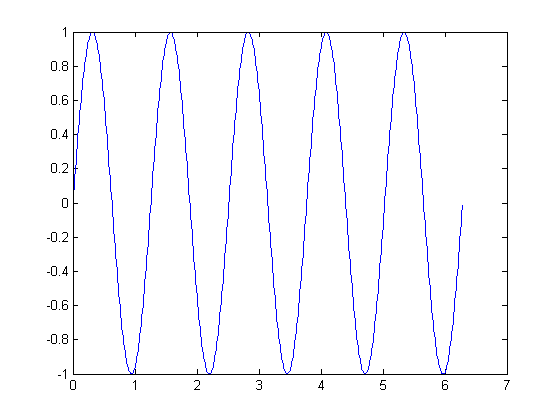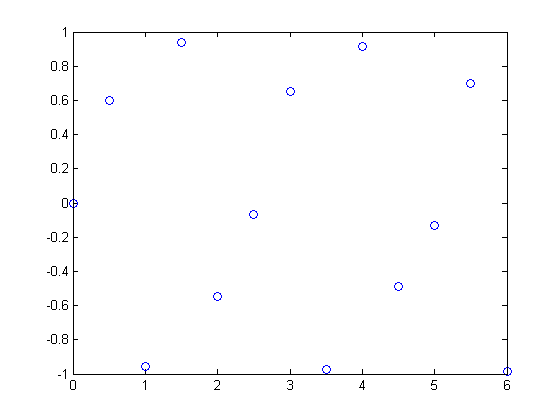(→Periodic Signals Revisited) |
(→Periodic Signals Revisited) |
||
| Line 10: | Line 10: | ||
:If you plot the signal in DT sampling at 5Hz you get a non-periodic signal as follows: | :If you plot the signal in DT sampling at 5Hz you get a non-periodic signal as follows: | ||
| − | [[Image: | + | [[Image:sin5tnonper_ECE301Fall2008mboutin.png]] |
:It looks very close to periodic, but it does not follow the definition of x(n+N) = x(n) that was learned in class. | :It looks very close to periodic, but it does not follow the definition of x(n+N) = x(n) that was learned in class. | ||
Revision as of 08:46, 11 September 2008
Periodic Signals Revisited
The function chosen (by randomly clicking a name) from hw1 is y=sin(t). Found here: http://cobweb.ecn.purdue.edu/~mboutin/ECE301/Index.html
I chose to modify the signal a bit and make it y = sin(5t).
- If you plot the signal in DT sampling at 5Hz you get a non-periodic signal as follows:
- It looks very close to periodic, but it does not follow the definition of x(n+N) = x(n) that was learned in class.



